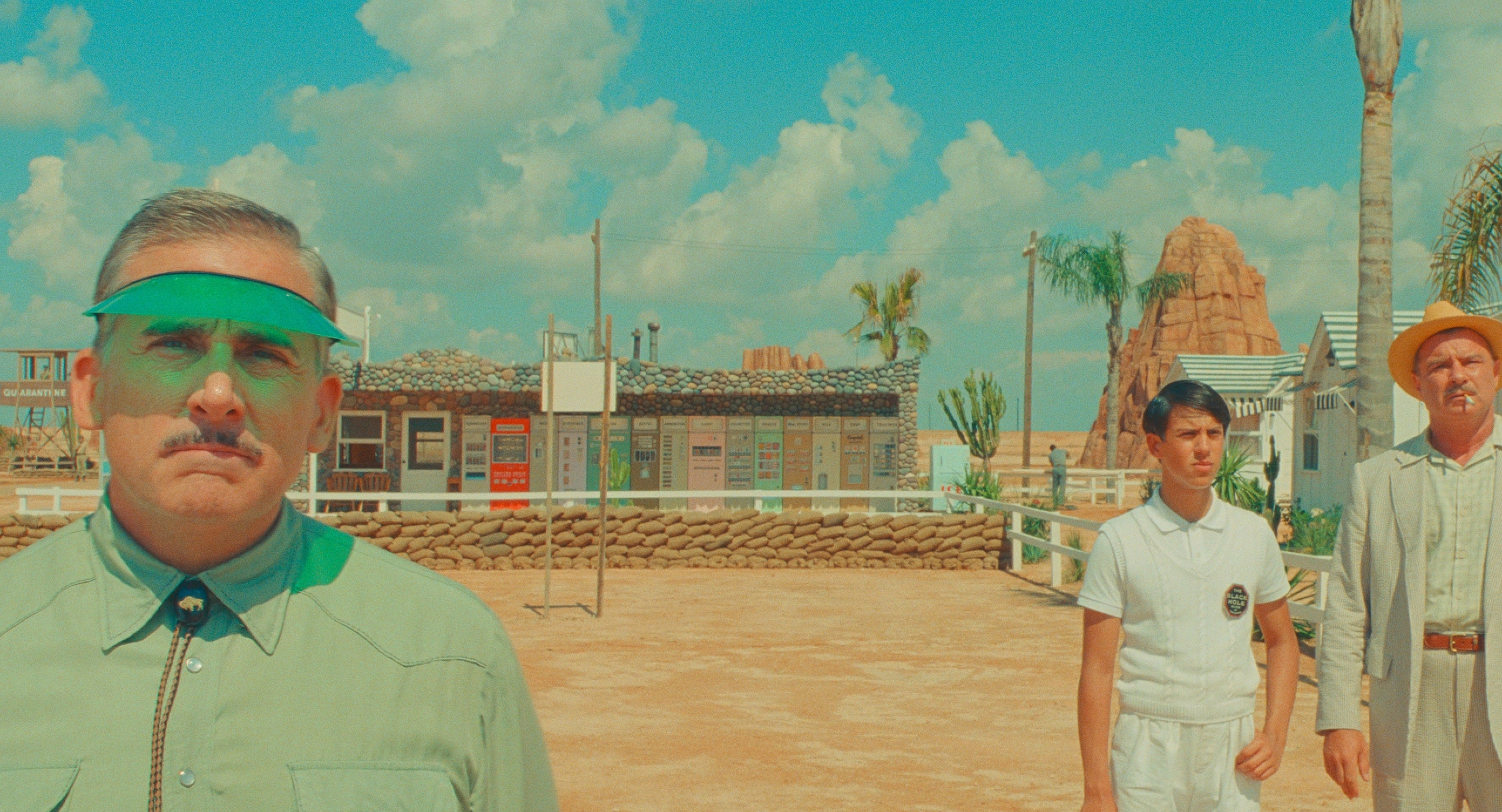Asteroid City – Film Review
Published July 4, 2023

Wes Anderson‘s newest feature Asteroid City is a mesmerizing journey into a fictional American desert town set in the year 1955. The film takes us through the events of a Junior Stargazer/Space Cadet convention, an annual gathering that brings together students and parents from across the country for fellowship and scholarly competition. However, what starts as a seemingly innocent and ordinary event quickly escalates into a series of world-changing occurrences.
From the moment the film begins, it becomes evident that this is one of the most Wes Anderson-feeling movies that Wes Anderson has ever directed. The quirky and offbeat nature of his storytelling is on full display, and it works to the film’s advantage. Asteroid City is a delightful concoction of wacky and goofy moments, providing ample laughter and amusement. Yet, amidst the humor, the film never shies away from delving into deeper emotional territory. It presents existential ideas, inviting the audience to ponder questions about the vastness of the universe and our place within it. Are we truly alone?
One of the most striking aspects of Asteroid City is its visual aesthetics. Every single frame is meticulously crafted and bursts with vibrant colors. Cinematographer Robert Yeoman deserves applause for his outstanding work. The attention to detail is astounding, from the meticulously designed sets to the carefully composed shots. Each scene feels like a carefully curated tableau, evoking a sense of wonder and whimsy. It is a testament to Anderson’s unique vision and his ability to create visually captivating worlds.
The opening and credits of the film bookend the story perfectly. The opening sequence immediately draws the audience into the peculiar world of Asteroid City, introducing its distinctive characters and setting the tone for the whimsical journey that lies ahead. Meanwhile, the closing credits provide a satisfying conclusion, leaving a lasting impression as they incorporate Anderson’s signature visual style.
One cannot overlook the exceptional performances delivered by the entire cast of Asteroid City. Every actor brings their A-game, resulting in a collection of phenomenal and potentially Oscar-worthy performances. Jason Schwartzman shines in the role of Augie Steenbeck, a war photojournalist with a complex past. Schwartzman effortlessly captures the character’s depth and inner turmoil, delivering a gripping portrayal. Scarlett Johansson mesmerizes as Midge Campbell, an enigmatic and famous actress. Johansson adds layers of intrigue to her character, leaving the audience guessing about her true intentions. However, it is Maya Hawke who steals the show with her portrayal of June Douglas, a teacher at the convention. Hawke’s performance is a revelation, showcasing her incredible talent and solidifying her place among the finest actresses of our time. Her ability to convey a range of emotions, from vulnerability to strength, is truly captivating.
Beyond its visual and narrative allure, Asteroid City is a film that leaves a lasting impact. It provokes thought and stirs emotions, a quality that many movies in recent years have failed to achieve. It invites the audience to reflect on their own existence and the possibilities that lie beyond the confines of our everyday lives. It is a rare cinematic experience that lingers in the mind, long after the credits roll.
Asteroid City is a triumph of Wes Anderson’s unique style and storytelling. It is a visually stunning film, filled with vibrant colors and meticulously composed shots. The performances are exceptional across the board, with Maya Hawke delivering a standout performance that is nothing short of extraordinary. The film strikes a perfect balance between wackiness and emotional depth, leaving audiences both entertained and introspective. Asteroid City is a cinematic gem that reminds us of the power of cinema to make us think and feel deeply.
